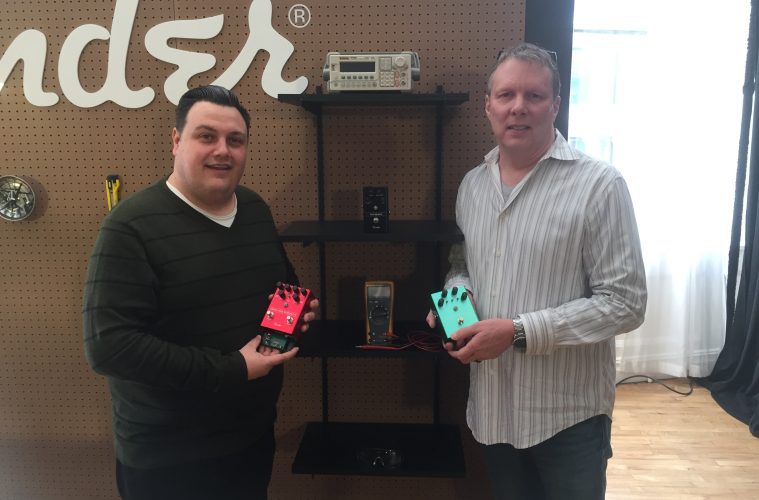Fender’s six-product pedal line — its first foray into this market — launched Feb. 27. The company officially premiered the products at a New York City press event, which recreated the workshop of Stan Cotey, Fender’s in-house engineer and vice president of product development — accessories and amplifiers, who spent many an hour designing the product. Fortunately, he joked that he’s not into watching sports, a good thing as it didn’t rob any of his time from making the pedals.
“If you go back to the very early part of Fender’s history, we built working tools for working musicians,” said Cotey, “They were built for function first, and we kept that same spirit in these pedals. A lot of the ideas, for me, came from listening, playing, and seeing how things not only sound, but also feel. You design something, build it, and then start fine-tuning it with a guitar, an amp and feedback from artists and players.”
The long hours needed to create the pedals were definitely worth it. “For us, it’s a passion project. When you have a passion project, you really put the time in. It was late nights and lots of flights and lots of communications between our team in Hollywood and our team in Arizona,” Richard Bussey, Fender’s director of product development — accessories and amplifiers, told the Music & Sound Retailer. “In the end, I’m really excited about the final product we have.”
Officially launched were the Pugilist Distortion at $99 MAP; Level Set Buffer at $99 MAP; The Bends Compressor at $129.99 MAP; two digital pedals, the Mirror Image Delay and the Marine Layer Reverb at $149.99 MAP; and the Santa Ana Overdrive at $199 MAP.
In addition to competitive pricing, Fender wanted to make sure the pedals are unique. A patent-pending battery door that Bussey said allows end users to change batteries much more rapidly than competitor products, as well as lighted LED knobs, are two such unique features.
But why enter the pedal market now? “The reason we wanted to get into pedals was we don’t own the signal chain if we don’t have pedals,” Bussey told the Music & Sound Retailer. “I think we make the best amplifiers in the world. I think we make the best guitars in the world. To me, if someone is creating a song, the amplifier is the canvas, the guitar is the paint brush and pedals are the paint. You are doing something different from the way the guitar was built and the amp is built. It’s how you make the song your own.”
Added Fender CEO Andy Mooney: “We have three objectives. First: offer compelling product in combination with compelling marketing. Second: fuel future growth in the category by allocating significant marketing resources to this short- and long-term. Third: elevate the profit potential in this category for our dealers in terms of margin and turn, relative to key competitors.”


